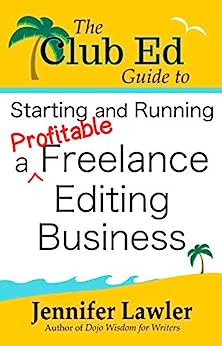Dealing with Unhappy Clients
There are two kinds of freelance editors: those who have pissed off a client and those who will piss off a client.
It’s inevitable. No matter how competent you are, someday you’re going to have a client who’s unhappy with your work. This can feel awful, even soul-killing, the first time it happens. It can put you off freelancing forever. I’ve certainly been tempted to scurry back to a staff job where at least I’ll have unemployment benefits if I’m fired. Then I come to my senses – and you should, too.
It happens (or will happen) to every freelancer. The key is to address the problem in a way that preserves the relationship or, when that’s not possible, at least defuses the situation so that you don’t get blasted all over social media for the next ten months.
The first step is to understand what went wrong. This is not so you can assign blame (“You did it!” “But you started it!”). Rather, it is so that you can understand what your next step should be.
So, in this step, you’re just asking why the client is unhappy: “Please tell me a little more about what you feel went wrong.” Everyone wants to be heard. Listen. Don’t interrupt, just listen.
If you are the cause – for example, you missed a deadline – then the next step is to apologize (“I’m sorry I missed the deadline.”). If there is an explanation, then go ahead and use it (“The power was out for three days after that massive storm and I had to preserve battery power for emergencies.”). People understand that problems crop up. What they don’t understand is if you don’t seem to care about it. Then ask if there is anything you can do to make them happy. (See below for more on that.)
If the client is the cause – for example, they thought the deadline was last Thursday but it’s actually this Thursday – then just say so, while acknowledging their upset: “Oh, I hear you, there’s nothing worse than people missing deadlines. However, I have this on my calendar as due December 10. See our email exchange below.” (Or whatever evidence you have.) “I hope that clears it up? I will definitely have it ready for you by December 10.”
If the cause is equally distributed – for example, you thought they understood what a developmental edit is but they expected something different – then you can say, “Oh, I’m sorry you’re disappointed. I did assume you knew what a developmental edit is, but I can see where I should have been more explicit in describing what to expect.” This is an acknowledgment of your part in the problem but it doesn’t let them off the hook for their part.
Then ask them what remediation would make them feel whole: “What would you like me to do about this misunderstanding?” Even if the client is equally at fault, you don’t want to lose them forever or make them even angrier so they can tell all the world how incompetent you are.
Listen to their answer. Sometimes what they want is just to be heard – maybe they were really expecting a glowing review and your criticisms (no matter how diplomatically stated) stung. Sometimes they realize their role in the misunderstanding and once you’ve apologized, they apologize. Sometimes they want something material, though, like a refund or a re-do.
Unless the problem is really their fault, I always give this to them because I feel its an easy way to defuse a situation. The client may never hire me again, but at least they’re not likely to fulminate about me for the next two years. And if asked about their experience with me, they may say it didn’t work out well but that I made good on the problem, and that in itself can be reassuring to a potential client. So, this is the approach I recommend.
Regardless of who was the actual cause of the problem, once you’ve helped the client cool down and have sorted out your options for solving it, you need to look over your processes to see if there’s something you can adjust so as to avoid the same type of problem in the future. (Screw up in new ways, not the same old ways!)
For example, make sure that your project quote includes a description of the type of edit you’ll be doing and the deliverables. Always confirm deadlines and fees before beginning work. After using inaccurate terminology in a revision letter to an author, I learned to set aside my edit for a day or two and then review it for accuracy before sending it. (I’ve caught countless typos and other errors this way.)
This review of processes is not intended as a session for you to beat yourself up (“What an idiot I am! That should never have happened!”) You’re human, you make mistakes. It’s better to add a step to your process to help prevent some of these mistakes than it is to pummel yourself over them.
Every freelancer deals with unhappy clients from time to time, but if you take charge of the situation you can often retain the client—or at least help prevent them from badmouthing you.
Join the Club!
New to story editing? Begin at the beginning.




